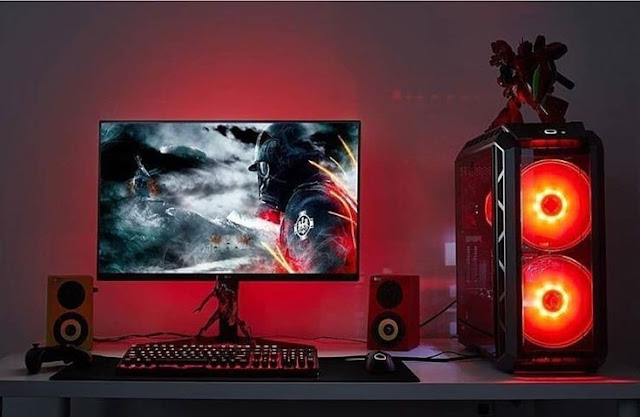The Impact Of Esports On The PC Gaming Peripheral Market: Opportunities And Challenges
 |
PC Gaming Peripheral Market |
In recent years, the explosive growth of eSports has had a profound impact on the PC gaming peripheral market. As competitive gaming continues to gain popularity worldwide, there is an increasing demand for high-performance peripherals that can provide gamers with a competitive edge. This article explores the opportunities and challenges presented by eSports in the PC gaming peripheral market.
The global PC gaming peripheral market is expected to exhibit a CAGR of 7.5% during the forecast period (2019-2027).
Increased Demand for High-Performance Peripherals:
eSports athletes require precise and responsive peripherals to optimize their gaming performance. This demand has fueled the development of advanced gaming keyboards, mice, headsets, and controllers that offer features such as fast response times, customizable buttons, ergonomic designs, and high-quality audio.
As eSports continues to grow, the demand for high-performance peripherals will only increase, presenting a significant opportunity for manufacturers in the PC Gaming Peripheral Market.
Customization and Personalization:
eSports gamers often have specific preferences when it comes to their peripherals. They seek customization options that allow them to fine-tune their gaming experience according to their individual play styles. This has led to the introduction of modular peripherals, RGB lighting customization, programmable buttons, and software that allows gamers to personalize their settings. Manufacturers that offer extensive customization options can attract a loyal customer base within the PC gaming peripheral market.
Collaboration with eSports Teams and Players: PC gaming peripheral manufacturers are increasingly partnering with eSports teams and professional gamers. These collaborations help promote their products and establish credibility within the eSports community. Team-branded peripherals and professional player endorsements create brand visibility and influence purchasing decisions among eSports enthusiasts. This presents an opportunity for manufacturers to tap into the eSports market and gain a competitive advantage.
Rapid Technological Advancements:
The fast-paced nature of eSports drives continuous technological advancements in the PC Gaming Peripheral Market. Manufacturers are constantly innovating to deliver cutting-edge features and functionalities that can enhance gamers' performance. This includes the integration of advanced sensors, mechanical switches, wireless technology, and improved ergonomics. The demand for the latest and most innovative peripherals from eSports gamers pushes manufacturers to stay at the forefront of technological advancements.
Intense Competition and Price Sensitivity:
The PC gaming peripheral market in the eSports space is highly competitive. With numerous players vying for market share, price sensitivity becomes a significant challenge. eSports gamers are often price-conscious and look for value in their peripheral purchases. Manufacturers must strike a balance between delivering high-quality, feature-rich peripherals and maintaining competitive pricing to attract and retain eSports customers.
Rising Expectations for Durability and Reliability:
ESports gamers put their peripherals through rigorous use, often for extended hours of gameplay. As a result, durability and reliability become essential factors in their purchasing decisions. Peripherals that can withstand the demanding nature of eSports competition and maintain optimal performance over time are highly sought after. Manufacturers must ensure that their products are built to withstand the rigors of eSports gaming and meet the expectations of gamers in terms of durability and reliability.
In conclusion, the rise of eSports has had a significant impact on the PC Gaming Peripheral Market. The demand for high-performance peripherals, customization options, collaborations with eSports teams and players, rapid technological advancements, intense competition, and rising expectations for durability and reliability are among the opportunities and challenges presented.
The global Head-Mounted Display (HMD) Market is estimated to account for US$ 5.5 Bn in 2021 and is expected to grow at a CAGR of 46.0 % over the forecasted period 2022-30.
Manufacturers in the PC gaming peripheral market need to continually innovate, adapt, and align their offerings with the evolving needs of eSports gamers to succeed in this dynamic and growing market.
Comments
Post a Comment